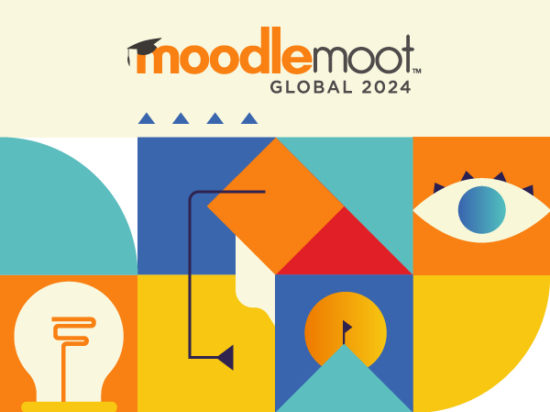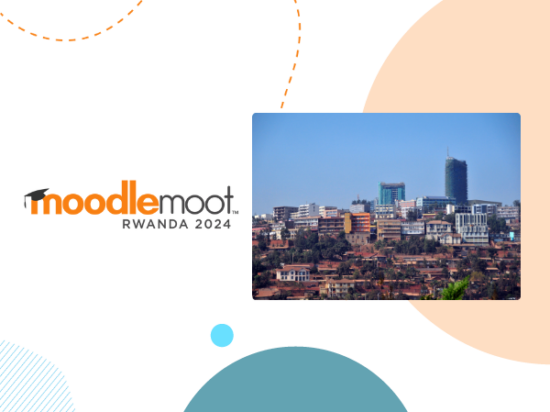Thanks to the work of Giuseppe Fiorentino, Daniela Rotelli and a team of volunteer translators from the University of Pisa, Moodle documentation can now be accessed in Italian
In 2017, after obtaining the support of the Linguistics and Translation Degree of the University of Pisa, Giuseppe Fiorentino, president of the Italian Moodle Users Association (AIUM) and his graduating student Daniela Rotelli decided to embark on a long and purposeful adventure: translating the English Moodle documentation contained in the online Moodle wiki into Italian, to achieve a high quality, completely localised documentation that would benefit the whole Italian Moodle Community.
Two years later, the project is a reality: more than 800 web pages of newly translated wiki pages in Italian are being uploaded to the Italian Moodle documentation. Giuseppe and Daniela have shared with us insights about the organisation and execution of this enormous task, the challenges they faced and what they learned during the process; valuable information and insights that can help other local communities who want to provide a translation for Moodle documentation for their members.
Giuseppe, Daniela, thank you for sharing your experience with the global Moodle Community. Tell us: why did you decide to start this project?
The Italian community was looking for a high quality Moodle Italian documentation since English is still an obstacle for some of our community members. The problem was commonly tackled with a plethora of often outdated Italian “manuals” and “How Tos”, almost all aimed at absolute beginners.
How many people have been involved in the translation project and how was it coordinated?
The project has involved 13 junior translators within an internship and 2 supervisors who helped in the translation and managed the workflow with the help of a ‘Traduttòmetro’, a rather complex Google Sheet used to store, organize and document the whole process.
What are the biggest challenges you have faced?
The translation of the official documentation is a tough task for many reasons, among which:
- The documentation topics range from system administration to pedagogy, together with all their jargon. It is therefore difficult to manage by any translator coming from a purely humanities or scientific background.
- Part of the documentation, i.e. the user interface and immediate help popups, is already translated into almost every language. Surprisingly, this is an extra difficulty more than an advantage, because the interface imposes a “canonic” translation of almost any Moodle term, requiring a continuous lookup.
- The documentation should follow the very rapid new version release policy. This makes it almost impossible to keep everything up to date, while translating and when done.
- There is no easy way to reach all English pages, because the whole documentation grows as a wiki and not every page is always properly linked within the rest.
Concerning the human resources side, the first and biggest challenge was to form and build a team of translators able to:
- Work asynchronously using online collaboration and (file) sharing tools;
- Translate technical documentation coming from a (purely) humanities background;
- Follow (written) directives, help each other and share the growing knowledge and expertise with colleagues.
How long has it taken to translate the English Moodle documentation into Italian?
We don’t know exactly. We started 2 years ago but, as the project is run as an internship with a varying workforce, all translators are free to work at the project according to their personal commitments. However, as of today, the total amount of hours is about 1500 spent in translations and revisions. To this sum must be added all the work of translation and workflow supervision, implementation of the pages on the Italian wiki, addition of Italian subtitles in the video tutorials, creation of the images of the wiki.
Why did you decide to upload your Moodle documentation translation to the wiki https://docs.moodle.org/it/ and share it with the Italian Moodle community rather than just keeping it for your university?
The “local and small” approach is exactly what produced a plethora of (almost all entry-level and soon outdated) Italian “manuals” available (when they are) online. Moreover, as a users’ association, our aim is to represent and support all Italian Moodlers, so we see no point in keeping it private or local – and therefore deemed to become obsolete as soon as the initial effort stops, regardless of its size. We made the necessary initial effort to provide the Italian community with a high quality and complete documentation so that anybody can easily take over and/or contribute in improving and updating it, and to better support the adoption of Moodle in all contexts, also in those where English is still a language barrier.
What’s next? Do you have plans to keep translating documentation for future Moodle releases using the same process?
Certainly yes, for some more time. The biggest part has been done and we believe/hope that soon the community will keep it up and running, following the next releases.
In order to share our experience and support the translation of Moodle documentation into other languages, we will soon release an “international shareable version” of our “Traduttòmetro” along with guidelines on how to use it and how to run and support the translation process. Then we will move to some other exciting long-term project!
From the Moodle Community and from Moodle HQ: Thank you, grazie mille Giuseppe, Daniela, and all the translators who contributed to this project.
If you too want to help make Moodle accessible in your language, go to the Moodle translation site or check the Moodle Docs overview to see if there is a Moodle documentation wiki in your language and become a volunteer translator today!
Every contribution helps to keep empowering educators, in all languages, worldwide.

Giuseppe Fiorentino
Associate Professor in Computer Science at the Italian Naval Academy of Livorno.
Teacher of “Educational Technologies” for the Mathematics Degree, “Technologies for Distance Learning” for Digital Humanities Degree and Linguistics and Translation Degree and “Laboratory of Educational Technologies” for the Primary Teacher Education Sciences Degree at the University of Pisa.
President of the Italian Moodle Users Association (AIUM)

Daniela Rotelli
Graduated in Foreign Languages at the University of Bergamo with a thesis on E-learning for the French language. She is a high school teacher where she teaches French using technologies; she also participates in exchange projects among European teachers. Currently enrolled in the Master’s Degree in Digital Humanities, she was the Tutor of the Educational Technologies course held by Giuseppe Fiorentino during the AY 2013/14.



